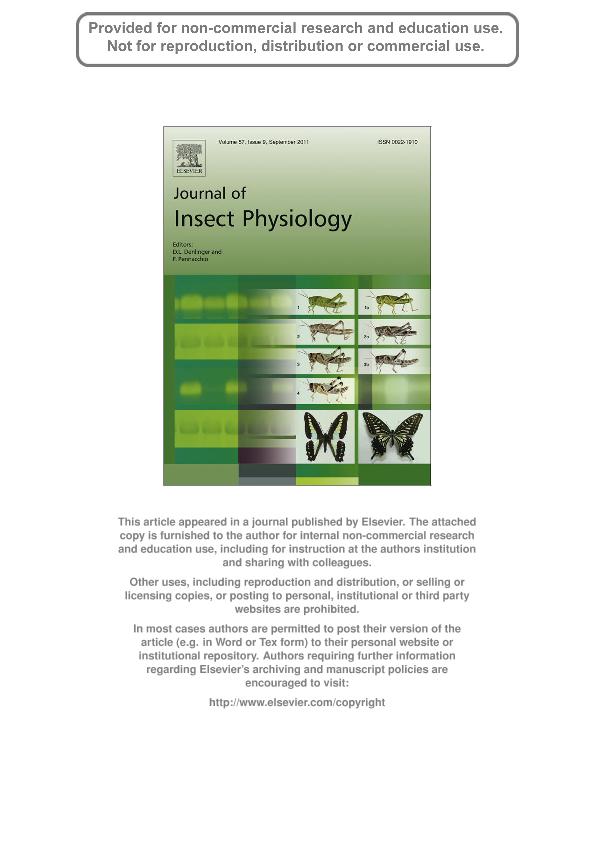Artículo
Consistent effects of a major QTL for thermal resistance in field-released Drosophila melanogaster
Fecha de publicación:
09/2011
Editorial:
Pergamon-Elsevier Science Ltd
Revista:
Journal of Insect Physiology
ISSN:
0022-1910
Idioma:
Inglés
Tipo de recurso:
Artículo publicado
Clasificación temática:
Resumen
Molecular genetic markers can be used to identify quantitative trait loci (QTL) for thermal resistance and this has allowed characterization of a major QTL for knockdown resistance to high temperature in Drosophila melanogaster. The QTL showed trade-off associations with cold resistance under laboratory conditions. However, assays of thermal tolerance conducted in the laboratory may not necessarily reflect performance at varying temperatures in the field. Here we tested if lines with different genotypes in this QTL show different thermal performance under high and low temperatures in the field using a release recapture assay. We found that lines carrying the QTL genotype for high thermal tolerance were significantly better at locating resources in the field releases under hot temperatures while the QTL line carrying the contrasting genotype were superior at cold temperatures. Further, we studied copulatory success between the different QTL genotypes at different temperatures. We found higher copulatory success in males of the high tolerance QTL genotype under hot temperature conditions, while there was no difference in females at cold temperatures. The results allow relating components of field fitness at different environmental temperatures with genotypic variation in a QTL for thermal tolerance.
Archivos asociados
Licencia
Identificadores
Colecciones
Articulos(IEGEBA)
Articulos de INSTITUTO DE ECOLOGIA, GENETICA Y EVOLUCION DE BS. AS
Articulos de INSTITUTO DE ECOLOGIA, GENETICA Y EVOLUCION DE BS. AS
Citación
Loeschcke, Volker; Kristensen, Torsten Nygaard; Norry, Fabian Marcelo; Consistent effects of a major QTL for thermal resistance in field-released Drosophila melanogaster; Pergamon-Elsevier Science Ltd; Journal of Insect Physiology; 57; 9; 9-2011; 1227-1231
Compartir
Altmétricas




